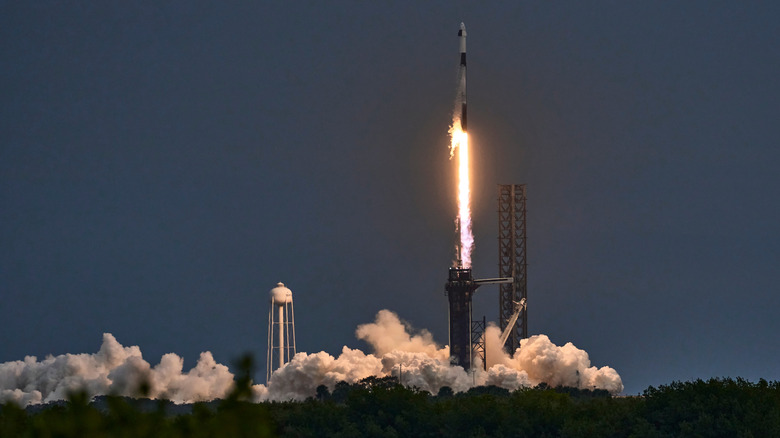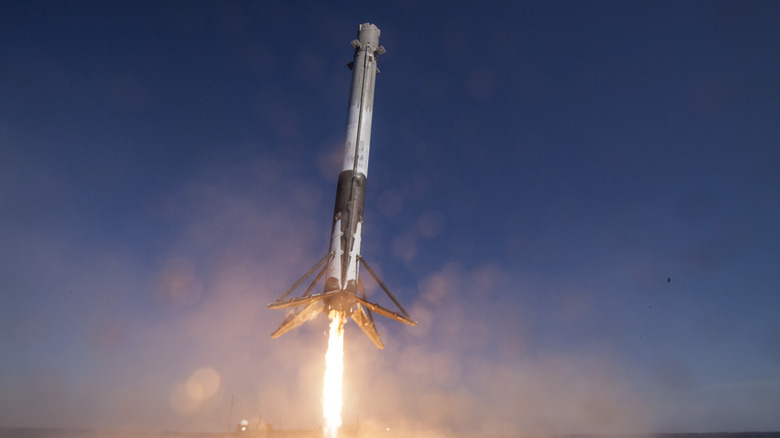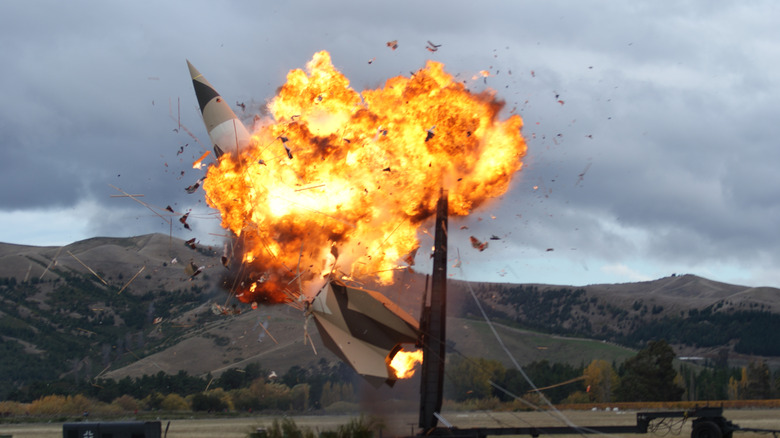How Many Times Has SpaceX Landed The Falcon 9? (And How Often Does It Fail?)
The Falcon 9 rockets have played a pivotal role in SpaceX's journey in space exploration as a private space company. The two-stage, reusable Falcon 9 rockets are SpaceX's second rocket after the Falcon 1 became the first privately built rocket to reach orbit in 2008. Although the initial launches resulted in failures, the fourth and final Falcon 1 launch turned out a success and changed SpaceX forever.
As SpaceX became the first private player to reach lower earth orbits, it quickly garnered attention from companies looking to send heavier payloads into space. The result was the Falcon 9 rocket that could send up to 28,991 pounds (the latest ones can now carry 50,265 pounds) to lower Earth orbit as compared to the measly 1,480 pounds on the Falcon 1. Thanks to the nine Merlin engines powering the rocket (which give it the name Falcon 9), it has a massive payload advantage over its single-engined predecessor.
That said, impressive payload capacity is second in line to the feature that truly makes the Falcon 9 shine; its reusability. As these rockets can land back on Earth after a launch and can be reused, they massively slash the cost of space missions. At the time of writing, the Falcon 9 has completed 430 successful landings, with a mostly accident-free track record. Although rare, these rockets have seen some failures, such as in August 2024, when the rocket caught fire and toppled into the sea while landing on a drone ship.
Landing the Falcon takes some work
While successfully launching the Falcon 9 to lower Earth orbit was one of the most important SpaceX missions, the company soon started working on the reusability bit through the Grasshopper program. Before landing the Falcon 9 rockets, SpaceX successfully launched and landed the Grasshopper prototypes in 2012 and 2013 to test their landing technology. In 2014, tests to land the Falcon 9 were in full swing and the company securely landed the rocket after reaching a height of 3,280 feet.
However, the biggest breakthrough came when SpaceX successfully landed the Falcon 9 after delivering 11 satellites to orbit (for comparison, that is over 100 miles above land) on December 21, 2015. Another major feat came when the Falcon 9 landed on a drone ship in the sea, on April 8, 2016.
Falcon 9 rockets work similarly to any other single use rocket during the initial phases of the launch, before detaching from the second stage. While other rockets fall back to Earth, the Falcon 9 rockets navigate their way towards the designated landing pad using the booster engines. The rockets then use the central engines and grid fins to stabilize and land vertically on the landing pad.
Failures involving the Falcon 9
Falcon 9 rockets naturally failed multiple landings during their testing phase in 2014 and 2015, which SpaceX even teased in a Blooper Reel. A major accident occurred in August 2014, when the engine sensors failed during a test flight, leading to a midair explosion on the Falcon 9. In June 2015, another Falcon 9 exploded midair, this time on a mission, after one of the struts in the second stage failed. The next major accident occurred in September 2016 (after SpaceX successfully landed the Falcon), when a faulty composite overwrapped pressure vessel (COPV) caused the rocket to explode on the launch pad itself during a test. However, the payload, which included Facebook's communication satellites, was destroyed in the explosion.
The rocket maintained a perfect streak until it met with another accident in July 2024 when an oxygen leak in the second stage led to the incorrect positioning of the satellites. While the first stage landed correctly, the mission ended up as a failure due to the loss of satellites. Another accident occurred only a month after, when a Falcon 9 whose first stage was being reused for the 23rd time, caught fire and toppled into the sea while landing on a drone ship. The rocket, however, successfully completed its mission of placing 21 Starlink satellites (you can even track these Starlink satellites) into orbit.


